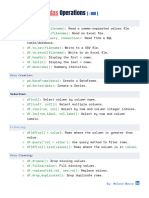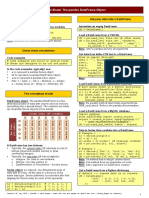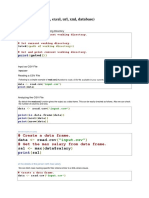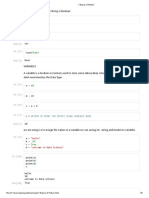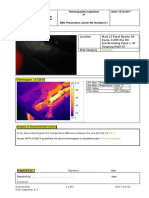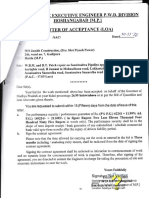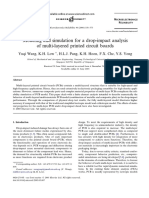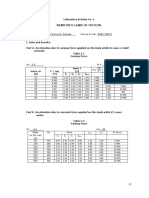0% found this document useful (0 votes)
205 views9 pages1 Import and Handling Data - Jupyter Notebook
The document discusses various ways to import and work with data in Pandas including:
1) Importing CSV data using pd.read_csv and specifying options like skiprows, nrows, na_values, and parse_dates.
2) Accessing and viewing data using commands like data.head(), data.tail(), data.columns, data.shape, and data.values.
3) Handling missing data through functions like data.isnull(), data.dropna(), and data.fillna() to identify, remove, or replace missing values.
Uploaded by
venkatesh mCopyright
© © All Rights Reserved
We take content rights seriously. If you suspect this is your content, claim it here.
Available Formats
Download as PDF, TXT or read online on Scribd
0% found this document useful (0 votes)
205 views9 pages1 Import and Handling Data - Jupyter Notebook
The document discusses various ways to import and work with data in Pandas including:
1) Importing CSV data using pd.read_csv and specifying options like skiprows, nrows, na_values, and parse_dates.
2) Accessing and viewing data using commands like data.head(), data.tail(), data.columns, data.shape, and data.values.
3) Handling missing data through functions like data.isnull(), data.dropna(), and data.fillna() to identify, remove, or replace missing values.
Uploaded by
venkatesh mCopyright
© © All Rights Reserved
We take content rights seriously. If you suspect this is your content, claim it here.
Available Formats
Download as PDF, TXT or read online on Scribd
/ 9
















